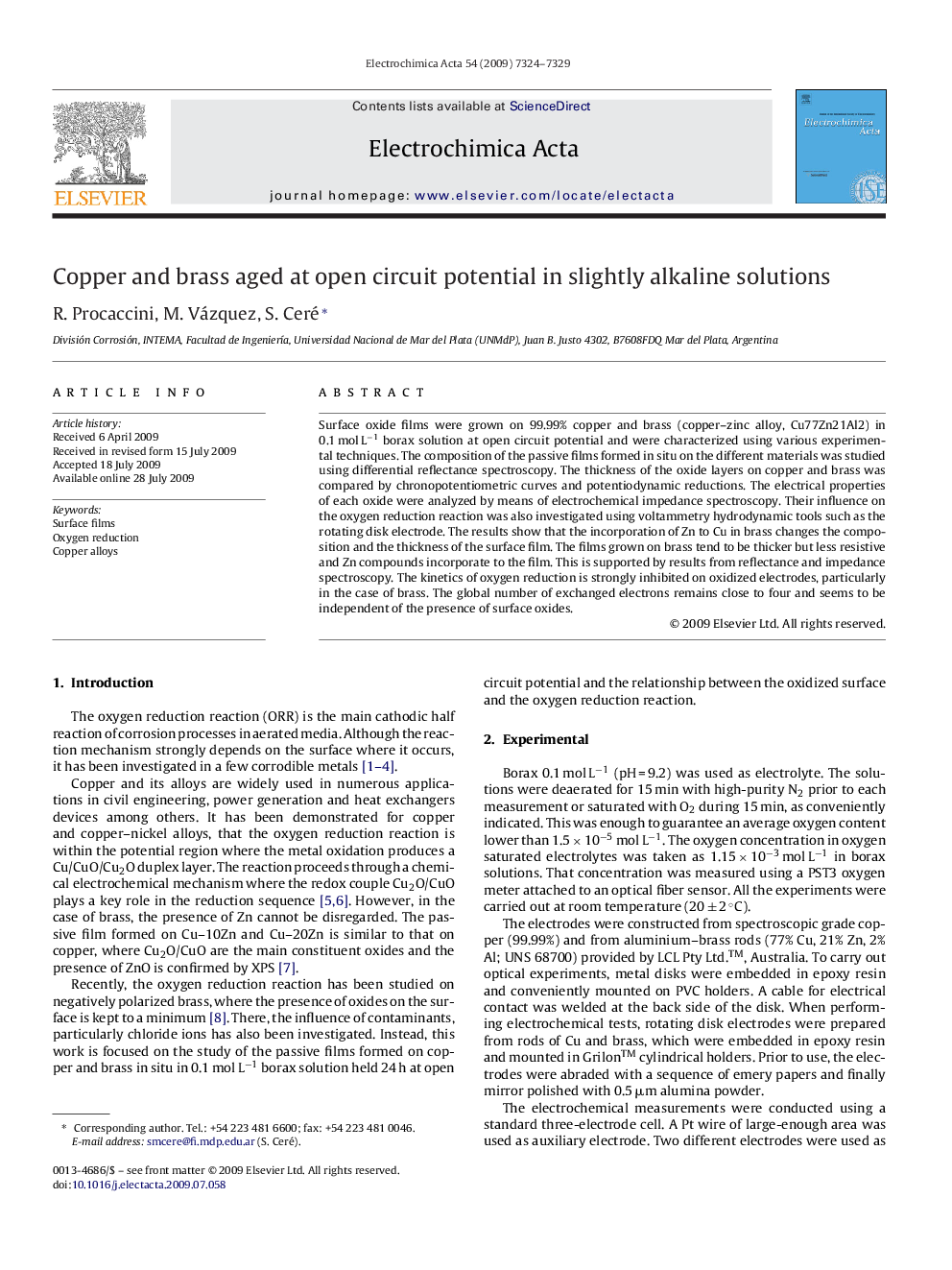| Article ID | Journal | Published Year | Pages | File Type |
|---|---|---|---|---|
| 191930 | Electrochimica Acta | 2009 | 6 Pages |
Surface oxide films were grown on 99.99% copper and brass (copper–zinc alloy, Cu77Zn21Al2) in 0.1 mol L−1 borax solution at open circuit potential and were characterized using various experimental techniques. The composition of the passive films formed in situ on the different materials was studied using differential reflectance spectroscopy. The thickness of the oxide layers on copper and brass was compared by chronopotentiometric curves and potentiodynamic reductions. The electrical properties of each oxide were analyzed by means of electrochemical impedance spectroscopy. Their influence on the oxygen reduction reaction was also investigated using voltammetry hydrodynamic tools such as the rotating disk electrode. The results show that the incorporation of Zn to Cu in brass changes the composition and the thickness of the surface film. The films grown on brass tend to be thicker but less resistive and Zn compounds incorporate to the film. This is supported by results from reflectance and impedance spectroscopy. The kinetics of oxygen reduction is strongly inhibited on oxidized electrodes, particularly in the case of brass. The global number of exchanged electrons remains close to four and seems to be independent of the presence of surface oxides.
